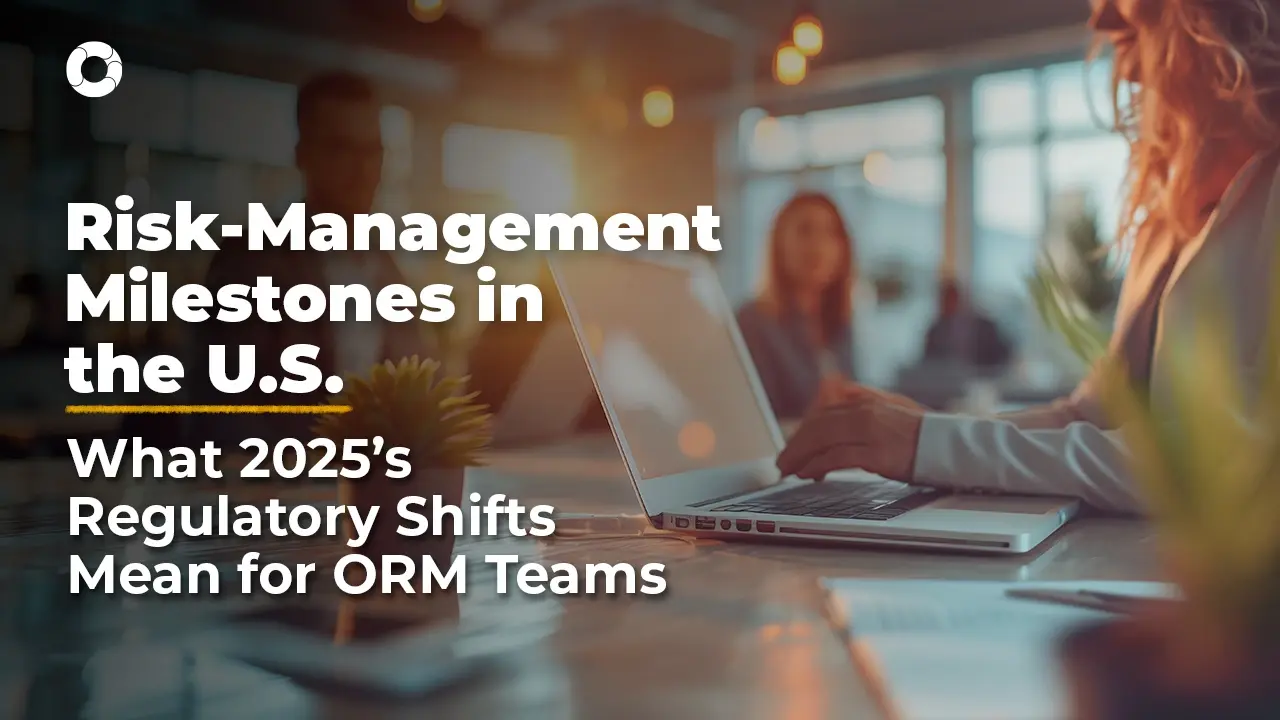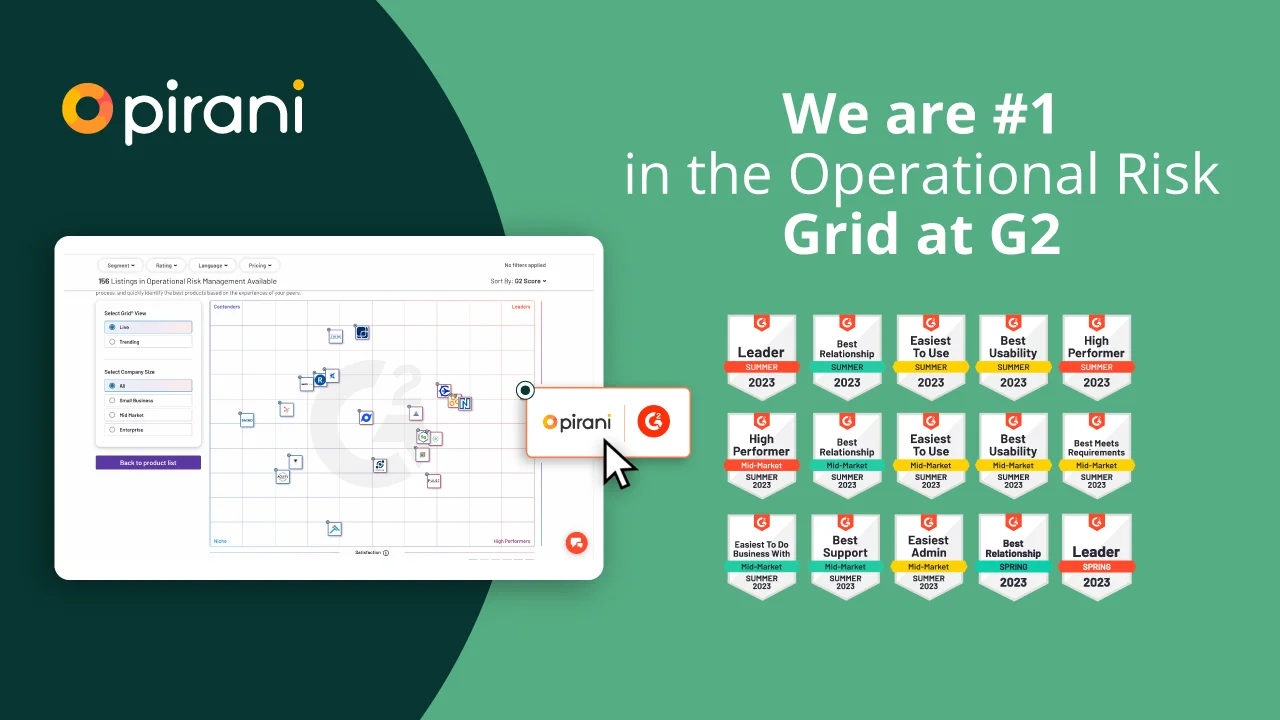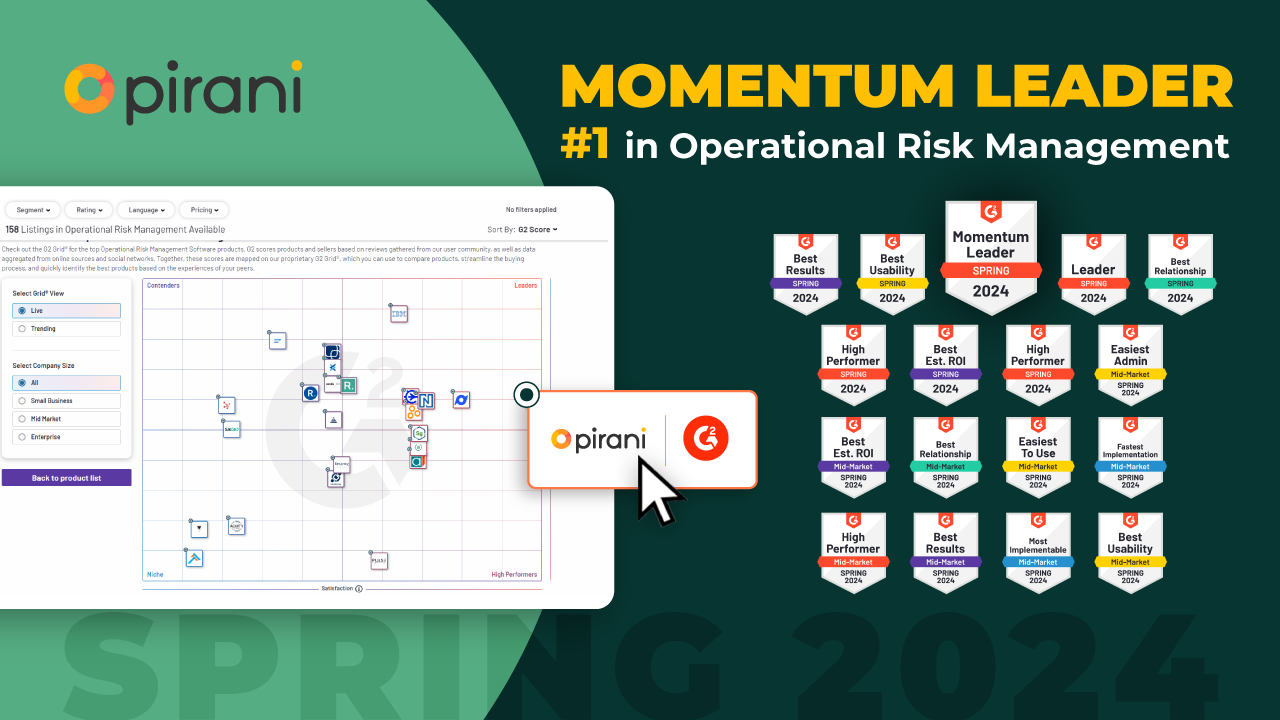When the Storm Hits: Managing Operational and Climate Risks Effectively

1. The growing urgency of hurricane-related operational risk
Each year, hurricane season tests the operational resilience of organizations—especially those in coastal and southeastern U.S. regions.
In 2025, Munich Re forecasts 14–19 named storms, 7–9 hurricanes, and up to 4 major hurricanes (Category 3+), above the long-term average.
Beyond physical destruction, hurricanes trigger chain reactions across operations, supply chains, and financial systems. For risk managers, these events are not “external anomalies” — they are operational risks that must be modeled, measured, and managed within the enterprise risk framework.
2. Why climate belongs in operational risk management
Under Basel III and most ORM frameworks, natural disasters fall within “external events.” But climate-driven storms have become systemic drivers of operational loss.
U.S. regulators have acknowledged this shift. The Federal Reserve, OCC, and FDIC’s Interagency Principles for Climate-Related Financial Risk (2023) require large institutions to integrate physical climate risks—such as hurricanes—into governance, controls, and scenario analysis.
Ignoring these exposures can distort capital planning and resilience assumptions, especially when a single storm can disrupt multiple business functions simultaneously.
3. Key operational risks during hurricane season
- Asset and infrastructure damage: facilities, branches, and data centers exposed to wind, flooding, and storm surge.
- Business interruption: power outages, road closures, and telecom failures halt critical operations.
- Supply chain collapse: key suppliers or logistics partners in coastal areas unable to deliver.
- Control failures & fraud: weakened oversight enables fraud, cyberattacks, or compliance lapses.
- Third-party dependencies: shared cloud providers, payment processors, or insurers hit by the same event.
According to the Philadelphia Fed, doubling storm damages correlates with an 8.4 % increase in operational losses for large U.S. banks. This isn’t weather — it’s a quantifiable financial risk.
4. The financial and reputational toll of unpreparedness
Organizations that treat hurricanes purely as insurance events underestimate the indirect costs:
- Lost revenue & productivity from downtime.
- Penalties & legal costs for missed obligations or regulatory breaches.
- Reputational damage from public perception of failure or negligence.
- Insurance premium spikes or exclusions in high-risk zones.
- Capital erosion when operational losses exceed modeled thresholds.
In an era of transparency and ESG reporting, investors and regulators increasingly scrutinize how organizations disclose and mitigate climate-linked disruptions.
5. Regulatory and supervisory expectations
The U.S. regulatory landscape is evolving quickly:
- OCC / FDIC / Federal Reserve: Climate risk principles emphasize board oversight, risk governance, and scenario testing.
- FSOC (U.S. Treasury): Highlights climate-related shocks as systemic financial risks, encouraging stress testing and data collection.
- NAIC (Insurance Regulators): Expanding climate resilience frameworks for insurers and asset owners.
Even though the OCC withdrew from the joint climate principles in early 2025, supervisory focus remains strong. Climate-related operational risk is now part of prudent risk management expectations, regardless of institution size.
6. Building resilience through integrated risk management
Embedding hurricane preparedness into operational risk programs requires both prevention and adaptability:
- Scenario analysis & stress testing: model multiple hurricane intensities and interdependencies across assets, processes, and vendors.
- Infrastructure & redundancy: reinforce critical sites, diversify data centers, and maintain independent energy sources.
- Continuity & incident response: define escalation triggers, test plans, and ensure remote functionality.
- Vendor resilience: assess supplier exposure, demand continuity attestations, and diversify sources.
- Monitoring & early alerts: integrate real-time meteorological data into dashboards for faster response.
- Governance & review: ensure board-level oversight and post-incident evaluations drive continuous improvement.
A mature Operational Resilience Framework aligns all these elements under governance, risk appetite, and continuous monitoring — the foundation of a climate-ready enterprise.
Hurricane season is no longer an unpredictable disruption — it’s a predictable operational risk that tests governance, continuity, and reputation. The true cost of unpreparedness isn’t measured only in financial losses, but in trust, compliance, and time to recover.
By integrating climate scenarios into operational risk frameworks, aligning with supervisory expectations, and using a platform like Pirani, organizations can transform climate volatility into operational strength.
FAQ — Climate and Operational Risk in Hurricane Season
Q1: Why should organizations treat hurricanes as operational risk rather than natural disasters?
Because hurricanes directly affect people, processes, systems, and third parties — all core components of operational risk. Classifying them as “external events” underestimates their systemic nature.
Q2: What’s the link between hurricane exposure and financial losses?
According to the Philadelphia Fed, operational losses at large U.S. banks rise by over 8% when storm damages double. Losses stem from fraud, business interruption, and contract breaches.
Q3: What regulations address climate and hurricane risk in the U.S.?
Key frameworks include the Interagency Principles for Climate-Related Financial Risk (Fed, OCC, FDIC), the FSOC Climate Report, and NAIC resilience standards for insurers.
Q4: How can organizations build resilience before hurricane season?
Develop scenario analyses, reinforce infrastructure, test continuity plans, diversify vendors, and monitor risk indicators in real time.
Q5: How does Pirani support climate and operational risk management?
Pirani centralizes your risk data, automates alerts, manages incident response, and documents controls—helping your organization meet both resilience and regulatory expectations.
Try Pirani now, create your free account 👇
Want to learn more about risk management? You may be interested in this content 👇
You May Also Like
These Related Stories

Risk-Management Milestones in the US 2025

Get to know the fundamental principles of Basel in banking

AI in Risk Management: From Opportunity to Governance Challenge

Operational Risk Management in 2025: Trends and Tools

Pirani Leads Risk Grid and Wins 13 Badges on G2




No Comments Yet
Let us know what you think